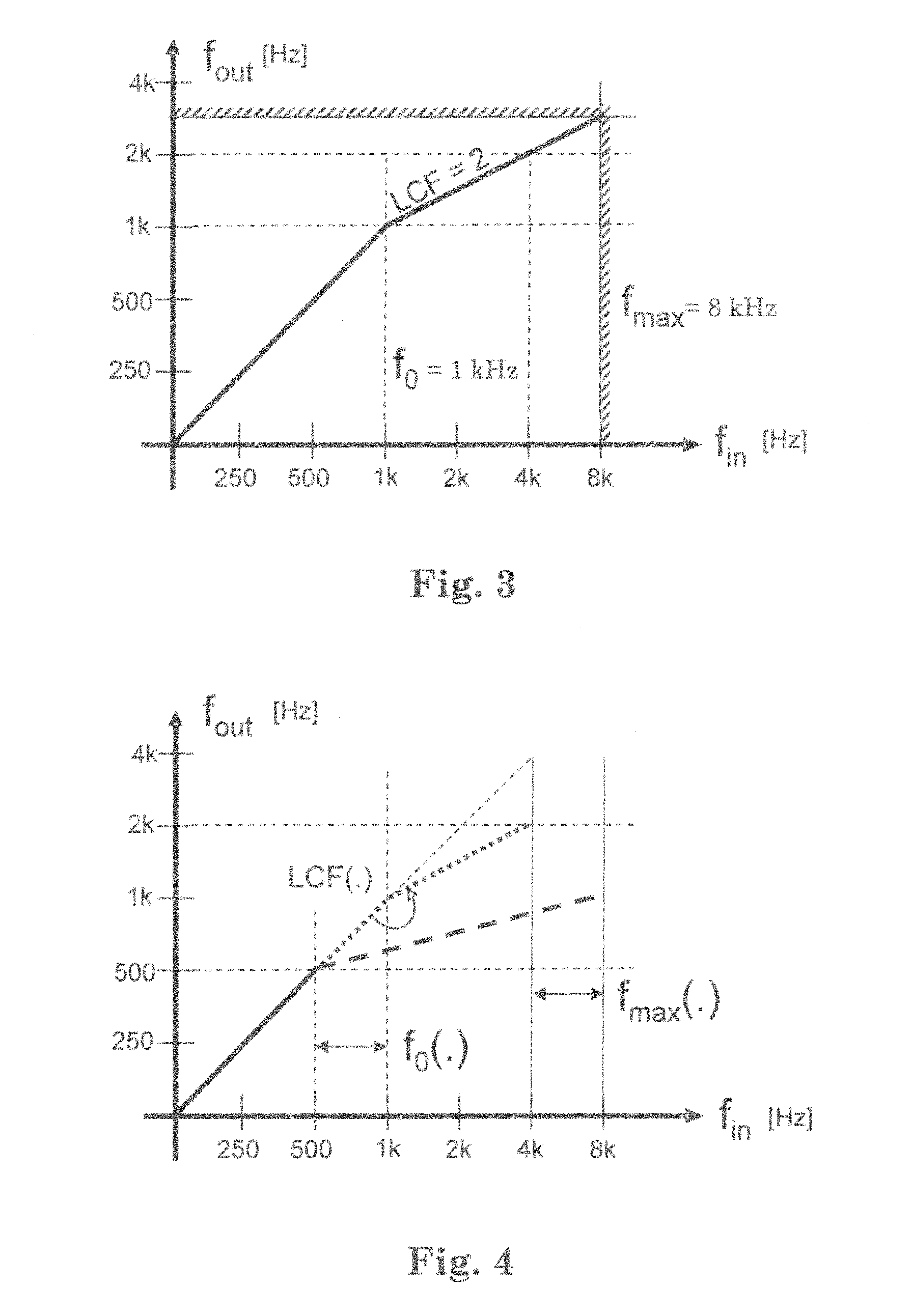Method for adapting sound in a hearing aid device by frequency modification and such a device
- Summary
- Abstract
- Description
- Claims
- Application Information
AI Technical Summary
Benefits of technology
Problems solved by technology
Method used
Image
Examples
Embodiment Construction
[0087]FIGS. 1 and 2 show the frequency mapping of different frequency modification schemes. Frequency modifications schemes can be defined by frequency mapping functions fmap( ) which define to which output frequency particular input frequencies are to be mapped:
fout=fmap(fin)
[0088]If different input frequencies fin are mapped to the same output frequency, the operation is termed “superposition of signals”. Superposing signals has the disadvantage that information may be lost since only the stronger ones may be detectable or perceivable. In particular soft sounds cannot be detected any more because of louder ones at the same frequency. Due to the information loss, the term “destructive superposition” may also be used. Superposition typically occurs when frequencies of a first range are mapped to a second range, while the frequencies of the second range remain unchanged.
[0089]When applying a frequency mapping there is further the aspect of harmonicity, firstly the harmonicity within ...
PUM
 Login to View More
Login to View More Abstract
Description
Claims
Application Information
 Login to View More
Login to View More - R&D
- Intellectual Property
- Life Sciences
- Materials
- Tech Scout
- Unparalleled Data Quality
- Higher Quality Content
- 60% Fewer Hallucinations
Browse by: Latest US Patents, China's latest patents, Technical Efficacy Thesaurus, Application Domain, Technology Topic, Popular Technical Reports.
© 2025 PatSnap. All rights reserved.Legal|Privacy policy|Modern Slavery Act Transparency Statement|Sitemap|About US| Contact US: help@patsnap.com



